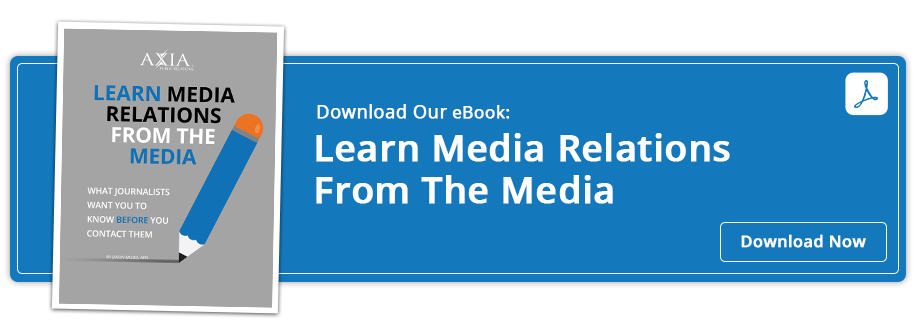-293555-edited.jpg) Learn to walk a mile in the media’s shoes and increase your chances for major news coverage
Learn to walk a mile in the media’s shoes and increase your chances for major news coverage
When you’re developing a press release or crafting a pitch for journalists, you usually think about things like spelling everything correctly and making sure your CEO is prominently mentioned. However, it’s more important to think about what will happen after you hit “send.”
You must strongly consider how the journalist will feel when she sees your information. Being aware of her process in deciding what gets printed or aired – including her anxieties and stress level – will give you a better chance of making the perfect pitch and achieving positive news coverage for your company.
Understanding what really happens in a newsroom
There are dozens of movies like Network, Broadcast News and Anchorman: The Legend of Ron Burgundy, where the news process is alternately laughed at and revered. Still, most people never really think about the actual work involved in creating a news broadcast or publication.
Think of it this way: If you could know the thought process of potential customers as they go through every step of the sales cycle, you would know exactly how to craft your messages and every encounter would lead to success. It’s the same with pitching to journalists, and it all starts with knowing what truly happens in the newsroom:
-
First, reporters need content – and plenty of it.
-
They look to the press releases and pitches they have received to help fill the gaps between the major stories of the day (national or local politics, education, major crimes or court cases, global concerns and consumer alerts).
-
There is always a morning meeting to decide what information is available and which stories will make it to the air or print. It is here that the producers and editors make their own pitches for story space and, if you’ve sent top-quality content, this is where they will fight for it to be included. Therefore, to ensure their attention and support, your press release or pitch must be compelling and amazing.
-
The producer/editor wants to look good among his peers, so he will only pitch ideas that have the best potential for making the most impact and providing the best value to his viewers/readers, and the battle for space is fierce. Thankfully, you can help.
Ways to make your pitch or press release stand out
It should read like a news story. To achieve best results, read it aloud to yourself or a colleague as if your job depended on everyone liking it.
Include any relevant research or data and double-check the accuracy of all information. If you can make the journalist’s job easier and prevent her from having to search for the information herself, your chances of getting coverage will improve significantly.
Pay attention to timing. Even when you have big news to share, make sure it’s not overshadowed by something bigger. Don’t schedule your events on the same day as another important occasion or recognition, such as September 11, unless there is a genuine connection.
Genuine: A fundraiser to create a scholarship program for the families of the firefighters who lost their lives on Sept. 11
Not genuine: During our company’s award banquet to honor the top salespeople for this quarter, we will have a brief moment of silence to remember 9-11.
Do the extra work necessary to target each pitch to an individual journalist.
Get PR help for your pitches
Whether you’re trying to sell a product or attract media coverage, if you don’t put yourself in the shoes of the recipient when pitching, your message will fall woefully short. Of course, doing this takes time, and that’s where PR can help.
At Axia, we use the expertise we have gained in working with journalists and editors to get the media attention your company deserves. Understanding the newsroom dynamics is just the tip of the iceberg. Download our e-book Learn Media Relations from the Media, and then be sure to read Part 2.
Lisa Goldsberry is a writer for Axia Public Relations with more than 15 years of public relations experience. She specializes in business, higher education and technology PR. Connect with Axia Public Relations on Twitter @axiapr.
Featured image credit: BigStockPhotos.com
Topics: shared media



Comment on This Article